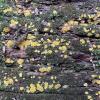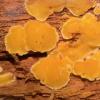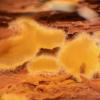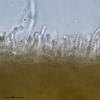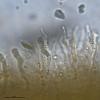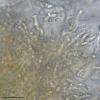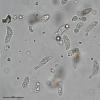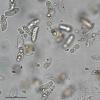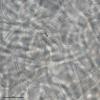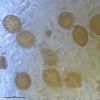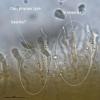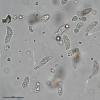
31-12-2025 19:27
Collected from loamy soil, at waterside (completel

30-12-2025 16:44
Pascal DucosBonjour,Une anamorphe rose stipitée, très nombre

30-12-2025 17:14
 Bernard CLESSE
Bernard CLESSE
Bonjour à toutes et tous,Pourriez-vous aider Albe

29-12-2025 10:15
Hulda Caroline HolteHello, I found and collected this propoloid ascom

30-12-2025 09:04
Hello.A Pyrenomycete sprouting sparsely but very d

29-12-2025 17:44
Isabelle CharissouBonjour,J'aimerais savoir si d'autres personnes au

12-11-2021 00:03
Lepista ZacariasHi everybody,A week ago in my fiels trip I noticed
This fungus was fruiting abundantly from decomposed decorticated Tsuga canadensis wood in Pennsylvania, USA. The flesh is gelatinous, pretty much a booger and very difficult to section. Context is a weaved matrix of hyphae dividing in circles and clamps. At the surface the spores appear to be born from conidiophores with small vacuoles, some that are branched but not septate. These conidia? measure 14.5 × 5.7 µm, with dead? spores with two large oil drops and alive? spores with many tiny oil drops.
There are some large orange spores embedded in the tissue that look like urediniospores of some kind of rust, so I am not sure if they are related.
I do not know where to start with this one, if anyone has an idea. An anamorph of some kind?
Thanks,
Devin

In my humble opinion, the first photos show something from Dacrymycetales.
The large spores in the last photo remind me of spores of species such as Aleurodiscus; Aleurocystidiellum ...?
Mirek
Fooled me!
After researching a little bit it looks like the large spores I thought were contamination are basidiospores from this fungus? Very interesting! Amorphus apparently does not have clamps so this may be A. grantii.

Surely that is correct as everything does fit, thank you! And Mirek your intuition was correct! Thanks! I guess the big orange spores are rust contamination! Confusing and coincendental, as Alurodiscus has many similarities from the photos.
Best,
Devin


Aleurodiscus amorphus:
Tsuga canadensis (On suppressed, injured, or recently dead trees.): New Hampshire - 586,Northeastern states - 94,New York - 586,
Aleurodiscus farlowii:
Tsuga canadensis: Maine - 245,New Hampshire - 245,Northeastern states - 94,New York - 245,Pennsylvania - card,
Aleurodiscus minnsiae - (Corticium minnsiae):
Tsuga canadensis: New York - 277,
Aleurodiscus penicillatus:
Devin

@Igor
Forgive me, Igor, but I will not agree with you.
The spores shown do not belong to Ditiola peziziformis.
I measured them according to the scale provided and they are definitely too small for the species you propose.
Me = 14.7 × 5.6 µm; Qe = 2.6
The length of the spores of Ditiola pezizoformis is much more than 20 µm.
Moreover, I believe that the spores shown are already mature enough. Have you noticed that they start to produce conidia what only mature spores do.
greetings
Mirek



